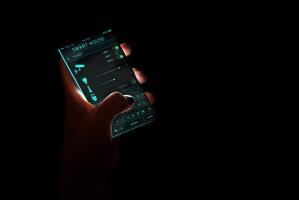IoT will play a vital role this winter

Winter is coming and this year looks especially cold. With increasing prices and dwindling supplies, many across the northern hemisphere are preparing for the likelihood of energy restrictions, says Carsten Rhod Gregersen, CEO and founder of Nabto, a peer-to-peer (P2P) Internet of Things (IoT) connectivity provider.
Despite the coming hardship, connected devices offer a glimmer of hope. Smart buildings with built-in energy management systems save 30% to 50% more energy than buildings without IoT. Devices like smart thermostats, therefore, offer a rare opportunity to increase optimisation and improve efficiency simultaneously. In fact, analysts see wide adoption as a substantive energy conservation opportunity currently untapped at the macro level.
On the other hand, however, there are certain cybersecurity and control considerations for consumers to keep in mind. So, let’s look at the promise and pitfalls of smart energy heading into this unusual winter.
The promise of smart energy
Optimisation is the name of the game for smart energy devices. Smart thermostats analyse a household’s patterns and adapt them according to variables. For example, occupancy. These devices can detect how many people are home if any and warm specific zones. This reduces the use of heating and cooling systems when nobody is home for significant periods.
For consumers, smart thermostats therefore offer major savings on utility bills. Energy Star reports its certified smart thermostats save on average 8% on heating or cooling. Meanwhile, according to Nest, users can save 10% to 12% on heating and 15% on cooling using a smart thermostat. The result? Average annual savings of between US$131 (€135.06) and $145 (€149.49) on consumer utility bills.
Such savings go hand-in-hand with the convenience of smart thermostats. On vacation? The system can adjust itself automatically. Likewise, users can change any settings at the click of a button from anywhere in the world. Consuming more energy than usual? Expect an automated report covering short-term and long-term energy consumption. In addition to real-time estimates, data is compiled monthly, quarterly or annually. Then, users can compare this information to past reports to see how their efficiency has improved, as well as measure their consumption against others. Taken holistically, these insights can help people better understand energy use and act accordingly.
As a result, the energy-saving potential of these devices holds great promise for conservation and the environment. New data reveals that smart thermostat penetration could reach about 40 million homes in the United States by 2026. The report from Kagan, S&P Global Market Intelligence’s media research unit, notes that such devices would potentially save the country 15 terawatt hours (TWh) of electricity. While significant, greater adoption could produce greater results. If smart thermostats were installed in every home with an HVAC system by 2026, Kagan estimated the country could cut annual space heating and cooling energy consumption by 9%, or 45.4 TWh, per year.
The problems with smart energy

However, in adopting more smart energy devices, consumers must take into account potential shortcomings. First, it’s worth considering cybersecurity. Poorly-made and cheaply-marketed connected devices are infamous for granting access to bad actors. Devices with shared default passwords and low cybersecurity protections should therefore cause pause for thought. There are too many horror stories of hackers gaining access to devices and exploiting cameras, microphones and user data. Be aware that this can happen without the proper protocols in place.
Second, and more specific to smart thermostats, users must be aware that utility companies can seize control of the device in certain scenarios. This is what happened in September when thousands of households lost the ability to control their thermostats during a heatwave. The utility company in Colorado locked out users for hours due to an “energy emergency.” Similarly, in Utah, Rocky Mountain Power counts an opt-in, incentivised program by which the company can shut off home air-conditioning units for a few minutes at a time.
As a result, maintaining user control from bad actors and utility companies is key when installing smart thermostats.
What you can do
The good news is that consumers can have the final say over smart thermostats. In the case of cybersecurity, as with any device, users should follow best practices. Change any default passwords or better chose a system that doesn’t use passwords and public key infrastructure instead, leverage data encryption and P2P communication for high privacy.
Meanwhile, to prevent utility companies from exerting control, consumers should oversee the thermostat installation process. This means purchasing your device and installing it yourself. During this process, create the system with a peer-to-peer connection which only communicates between the client and the device. By controlling the thermostat and using a direct connection, users can rest assured that outside control is not possible.
At the same time, it’s worth mentioning that not all customers in Colorado and Utah had their thermostats forcibly changed. Rather, it only happened to only those who had signed up for specialty rewards programs. Xcel’s reward program in Colorado offers credit for enrolling in the customer program along with an annual cash benefit. At the same time, those who enrol agree to give up some control to save energy and money and “make the system more reliable.” So, keep such potential limitations in mind when signing up for any utility company program.
In my view, smart thermostats will play an important role this winter. Not only can they help us to combat rising costs, but they offer an easy way to conserve energy. The caveat, however, is that outside forces can interfere if not properly installed. My advice is simple: install your own device, customise the connection and enjoy the benefits of smart energy.
The author is Carsten Rhod Gregersen, CEO and founder of Nabto.
About the author
Carsten Rhod Gregersen, CEO and founder of Nabto, a peer to peer (P2P) IoT connectivity provider that enables remote control of devices with secure end-to-end encryption.
Comment on this article below or via Twitter @IoTGN
